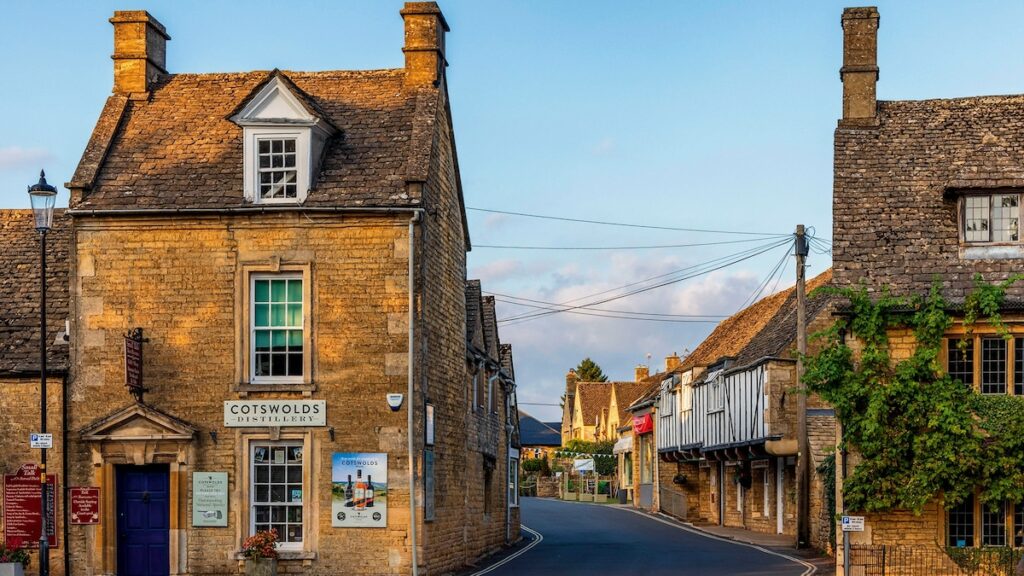This article was produced by National Geographic Traveller (UK).
What’s happening in the world of whisky?
In news that might surprise some north of the border, the English whisky scene has been calmly fermenting into an unlikely yet innovative cradle of quality whisky-making.
Err… that doesn’t sound right.
Actually, England has form in whisky distilling, which dates back to the early 1800s. In 1887, there were four significant whisky distilleries below the border. However, the bottom soon fell out of the over-inflated UK whisky market, and in the early 1900s, the last English whisky distillery, in East London’s Lea Valley, closed. Today, however, there are at least 49 distilleries in operation or being built and it’s estimated that by the end of 2024 there’ll be 50,000 whisky casks maturing in English warehouses — from the top of Northumberland to the tip of Cornwall — and that the value of these stocks will exceed £1bn. Despite sailing into some challenging economic headwinds (such as Brexit and rising production costs), sales of English whisky went up by nearly a third in 2022 and it’s reckoned that capacity will grow to 3.6 million litres per annum this year. It’s a drop in the barrel compared to Scotland, Ireland and the US, but English distillers are exporting to more than 32 markets around the world — even north of the border.
What distinguishes English whisky from Scotch, Irish and other world whiskies?
Diversity. The embryonic English whisky scene is immensely eclectic. Not hamstrung by history nor tethered so tightly to tradition as their neighbours, English distillers are able to innovate with measured abandon. The vast majority of distilleries (97%) are making single malt whisky, but around a quarter are also using other grains, too, including rye, oats and other local ingredients. Drawing on a wide array of global whisky scenes, they’re also embracing pioneering ageing techniques, modern distilling processes and, crucially, celebrating provenance — collaborating with local producers, partnering with neighbouring brewers and using ‘indigenous’ ingredients.
But is it any good?
It is. Distilleries from England have scooped quite a few distinguished industry gongs — ahead of distilleries from all over the globe. The Lakes Distillery won Best Single Malt Whisky at the World Whisky Awards in 2022 and more recently, Best Distillery of the Year at the 2023 Tokyo Whisky & Spirits Competition. Back in 2018, in an effort to raise standards and encourage collaboration, a number of distillers came together to create the English Whisky Guild. Now with two dozen members, it serves as a unifying force for English whisky producers. What’s more, in 2022, it submitted a geographical indication (GI) application for English single malt whisky to the UK government. The application, in true English tradition, is currently waiting in a queue.
Whiskeyside in Yorkshire has one of the largest collections in the country.
Photograph by Matt Dugdale
Where to drink English whisky
1. Whiskyside, Yorkshire
Located on the site of a disused swimming pool within a holiday park, this is thought to be the only bar dedicated entirely to English whisky — it boasts the largest collection in the country.
2. Cotswolds Distillery
Cotswolds does a cracking, indeed award-winning, tour and tasting experience. The cafe, with its summer terrace, is a picturesque place to relax and sip its wonderful whiskies, too.
3. Milroy’s of Soho
This imbibing institution is a one-stop shop for whiskies from all over the world and its collection of English whiskies is as comprehensive as you can find anywhere — all overseen by very knowledgeable staff.
Three English whisky’s to try
1. Cotswolds Peated Cask Single Malt Whisky
Using floor-malted barley grown just 15 minutes from the distillery, Cotswolds makes high-quality whiskies, including this wonderfully balanced small-batch expression matured in ex-peated quarter casks.
2. Wire Works Virgin Oak
White Peak whiskies are mashed, fermented, distilled and matured deep in the Derbyshire Dales on the banks of the River Derwent, within an incredible 19th-century former wire works. This lightly peated single malt exemplifies the brand’s artisan approach.
3. Circumstance Single Grain Estate Whisky
The core expression from this acutely innovative Bristol-based distillery features four different grains, a trio of different brewing yeasts (including mead) and is aged in three different casks (ex-bourbon, new European oak and oloroso).
Published in Issue 23 (spring 2023) of Food by National Geographic Traveller (UK).
To subscribe to National Geographic Traveller (UK) magazine click here. (Available in select countries only).
>>> Read full article>>>
Copyright for syndicated content belongs to the linked Source : National Geographic – https://www.nationalgeographic.com/travel/article/is-english-whisky-good
